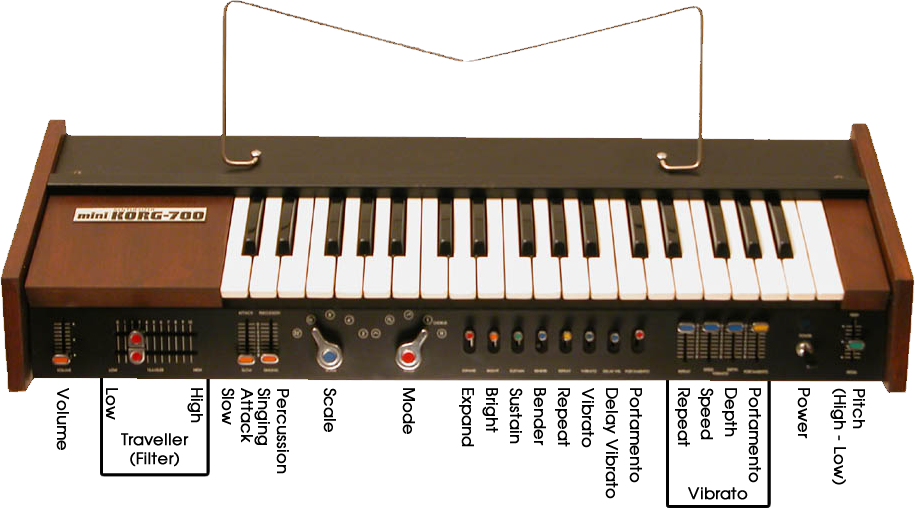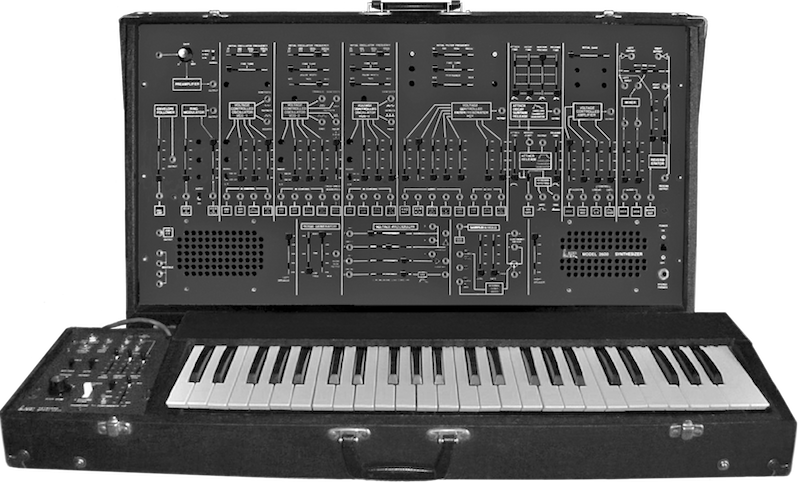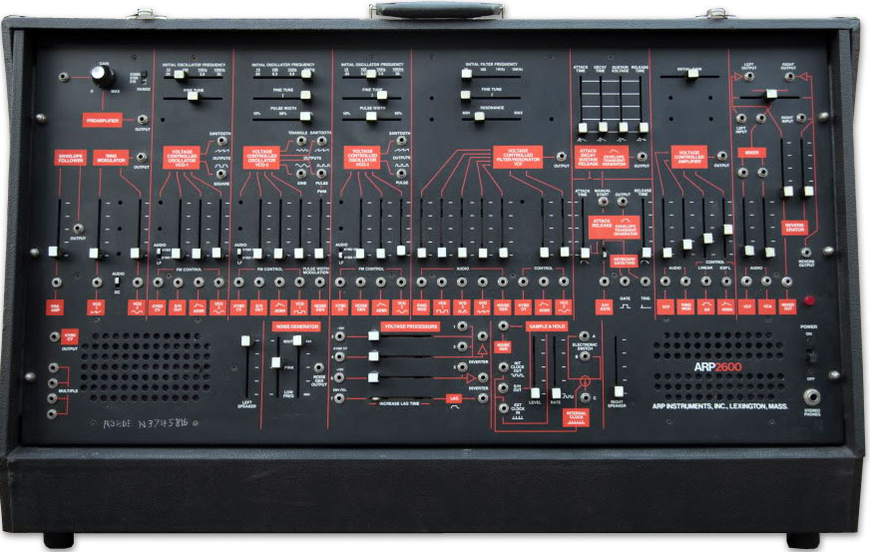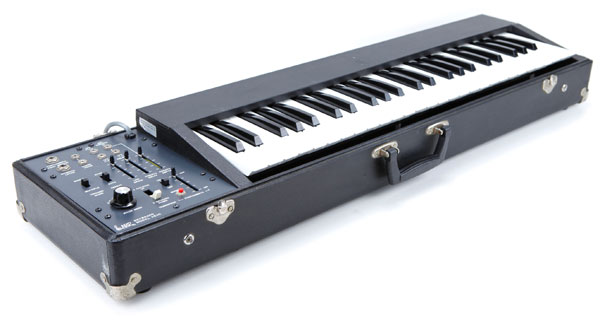|
While sifting through some Files on my Mac mini, I re-discovered a few interesting Music-related Links which I thought some of you might find useful.
This first one is to a video where the Narrator compares his Minimoog with the Behringer Poly D. Here's the link: www.youtube.com/watch?v=f3dEAptsg_A
0 Comments
(1/18/21)
Today begins “NAMM 2021”. NAMM is the “National Association of Music Merchants”. Each year they hold two Expos — “Winter NAMM” in January and “Summer NAMM” around June or July. The Winter version is typically held in California and the Summer version in Tennessee. Each Event occupies the Meeting Rooms of several very large Hotels. This year’s “Winter NAMM”, however, is “virtual” / online-only. Both NAMM Events are aimed at Music Manufacturers and Music Retailers. This particular NAMM-happening is also open to the General Public and it’s free. Simply visit the NAMM website (link below) and Register. Music gear manufacturers should be releasing new products all this week and will probably be dripped-out over the next few days. Today, though, two Synthesizers caught my attention. Both are from Korg:
Here’s the link to an article about the new version: https://www.synthtopia.com/content/2021/01/17/korg-reissues-classic-minikorg-700-synthesizer/ The other Synthesizer that caught my attention today is the “ARP 2600 M”. Although I’m a Drummer, I also consider myself a “Synthesist”. I enjoy creating all types of sounds and I was attracted to Synthesizers shortly after they were widely available to the General Public, in the early 70s. I like exploring all the possibilities a Synthesizer has to offer and, even though the miniKORG 700 was my first synth, I quickly discovered its limitations. As I started thinking about replacing it, I kept hearing a fantasticly-rich sound, in the many Rock, Heavy Metal and Progressive Rock songs I listened to every day. Doing some research (with no “Internet” at that time), I learned that this wonderful Synthesizer was the “MiniMoog”. So I saved up my money once again, sold the miniKORG 700 and purchased a MiniMoog. At that time, it cost me $1,495. It took me quite a bit longer to feel the limitations of the MiniMoog but its sounds were some of the richest I have ever interacted with. Even today. Many months later, I saw a photo of an “ARP 2600”. It was love at first sight. I just saw a sea of Sliders. Lots and lots of Sliders. It’s potential looked limitless. Especially compared to the MiniMoog. Ring Modulation, Sample & Hold and Patch Points were the biggest attractions for me. So I saved my money once again, sold the MiniMoog and bought a used ARP 2600. It was the "all-black, with white markings" version. I think I paid about $600 for it at that time (mid 70s).
Here’s the link to an article on today’s release of the “ARP 2600 M”: https://www.synthtopia.com/content/2021/01/17/korg-intros-arp-2600-m-the-genuine-arp-2600-in-a-more-convenient-size/ Here’s the direct link to the NAMM website, to learn more about what’s happening this week: www.namm.org Here's a link to a 21-minute video where Synthesist, Lisa Bella Donna, compares 6 Moog Synthesizer models:
www.synthtopia.com/content/2019/11/09/6-moog-synthesizers-compared/ In the early 70s, when I was still in High School, I bought my first Synthesizer. A "Univox K1", which was also produced as the "Mini-Korg" and "Mini-Korg 700" and a few other names. Although I'm a Drummer, I enjoy the nearly-endless sounds that can be produced by Synthesizers. The biggest aspect of the Univox K1 was its Filer, which Korg called the "Traveller". Whenever I swept that Filter, it produced some very rich Harmonics. This was a whole new world of sonic textures for me and I wanted more! The more I immersed myself in the world of Pop Rock, Progressive Rock, Heavy Metal, Funk, etc., I kept hearing those sweeping Filter sounds as well as other textures that I just couldn't create with the Univox K1. Then I learned about the existence of the Synthesizer which changed Rock Music forever, the "Minimoog". Of course, I HAD to have one! Because I was still in High School and living at home with my Parents, I had LOTS of time to explore everything the Minimoog had to offer. After a time, I found myself continually creating the same Patches (Sounds) with the Minimoog. I was getting increasingly frustrated with its limitations. Then I heard about a Synthesizer called the "ARP 2600". When I saw photos of it in magazines, I was instantly caught in its Spell. I could see that it had unlimited potential for Sound creation.
Sylvia and I don't really like to buy "used" equipment, for different reasons. The main reason is that we can sometimes feel the old energies which may still be attached to them. However, even though I was now in College, I still couldn't afford the price of a "new" ARP 2600. So I bought one, used, from a nearby store. It was the Black & White one, seen above. After getting Married, for the first time, I had to sell it. However, many years later, afterMarrying Sylvia, we heard that the ARP company was going out of business. I explained to Sylvia that the ARP 2600 was the most complete and versatile Synthesizer of its time. She agreed. So we immediately phoned the ARP company. A man with a broken English voice answered the phone. My guess is that this was the "man" himself, Alan R. Pearlman. He actually took the order. Because we had read about the bankruptcy in a "magazine" (which meant this news was already old), Sylvia and I feel that the ARP 2600 we currently own is "probably" "the last" or, at least, "one" of the last ones ever sold by that company. (We bought the one with the orange "blocks" describing the functions.) Here's a great web page showing the many versions of this incredible Synthesizer: www.vintagesynth.com/arp/arp.php It looks as though Synthesizer pioneer, Alan R. Pearlman, "crossed-over" on January 5th 2019. Although more people, especially non-Musicians, will have heard of "Moog" Synthesizers, Mr. Pearlman founded the "ARP Instruments, Inc." in 1969 and contributed quite a bit to the Music industry. This is what his daughter Posted, regarding his crossing: My father passed away today after a long illness. Here's the link to the Synthtopia website, where I first learned of his crossing: www.synthtopia.com/content/2019/01/06/arp-founder-alan-r-pearlman-has-died/ Here's a link to a short, video interview with Mr. Pearlman, from 2006: www.namm.org/library/oral-history/alan-r-pearlman?fbclid=IwAR0hsbPR2buZVzHu04T5c6evuHjCnDHFxrvQTUZ2qsJNcIH5W6Q7CEFKEF8 Electronic Synthesizers helped shape Music, in every genre, since they were first invented. According to this Wikipedia article, that would be 1876: en.wikipedia.org/wiki/Synthesizer#Early_electric_instruments
Most Synthesizers have a very unique or slightly different sound. The "Moog sound" is probably the most recognizable — especially for those of us who first began listening to Music in the '60s and '70s. During those early years, the biggest companies, still known today are:
Of all the Synthesizers, up to about the 1980s, the original "minimoog Model D" was the most popular. Although I'm a "Drummer", while I was still in High School, I bought a very basic "Korg" Synthesizer. (I don't remember its name.) Hearing more and more about this "minimoog" thing, in the early '70s, I saved-up and bought one from a local Music Store ($1,495). The sounds were rich and the various combinations of sonic textures were easy to pull out of it. It was an amazing experience.
Then I heard about something called an "ARP 2600". After seeing some images and reading several articles on it, I knew I had to buy one. This thing was a monster! It had features none of the Moog Synthesizers, at that time, offered (especially on their "non-Modular" Synthesizers, like the minimoog):
Many, many Musicians have used ARP Synthesizers in their Music… and, even though the ARP company hasn't existed for decades, many Musicians continue to use those Synthesizers in their Music. Here's a link to the song "Frankenstein" by Edgar Winter. You can see him play the ARP 2600 in this video: www.youtube.com/watch?v=x1mV_5-bRPo Here's a page where you can see the different variations of the ARP 2600 over the years: www.vintagesynth.com/arp/arp.php Although ARP released several different Synthesizers over the years, my ARP 2600 could not only imitate most of their sounds but also added a bit more… that is, until I heard about the "ARP 2500"! In its day, I really wanted an ARP 2500 but Sylvia and I could never afford one. It was a big powerhouse of its time.
Here's the link to an "ARP 2500" web page, which explains some of its capabilities: www.vintagesynth.com/arp/2500.php Jimmy Page, of Progressive Rock band "Led Zeppelin", has (or had) an ARP 2500. Pete Townshend, of the Rock Band "The Who", also used an ARP 2500. You can hear that instrument's "Sequencer" Module on their song: "Baba O'Riley". It's right at the beginning. Here's a link where you can hear that song: www.youtube.com/watch?v=x2KRpRMSu4g Here's the Wikipedia page for "ARP Instruments, Inc.": en.wikipedia.org/wiki/ARP_Instruments Probably the most popular "ARP" Synthesizer was the "Odyssey". My notes here don't do enough to explain the impact Mr. Pearlman and his instruments have had on me, Sylvia and this entire world. Thank you Mr. Pearlman! Behringer has been making audio equipment and electronic musical instruments for many years. The few pieces of information Sylvia and I had heard about them was mostly from some of their unhappy customers, who let their complaints be known on various Forums. Around 2015 or so, company Owner, Uli Behringer, commented about Moog's extremely high prices and said he could manufacture and sell similar Synthesizers for around $300.
Later, Behringer's Synthesizers, which were "copies" of popular Synths decades before, would become known as "Clones". The first "Clone" Behringer made was of Moog's famous "Mini Moog Model D". Granted it didn't have a Keyboard but it IS currently selling for $299! A few months later, Moog decided to release something "new". So they created the "Mini Moog Model D" and placed a Retail price of $3,500 on it!!!
The new Mini Moog does have a Keyboard and, although Moog added "MIDI" (digital technology, which the Behringer "Model D" also has), they added a few Patch Points (interconnection Jacks) for Control Voltage and other benefits when working with other Synthesizers. (The Behringer version also has MIDI and several Patch Points.)
Since that first Behringer Synth, they have created their very own, not "Cloned", Synthesizer called the "Deepmind 12". This one does have a Keyboard, has MANY more features than Moog's Mini Moog and Retails for just $1,000!!!
Several years ago, Behringer began building a new Factory in China. The manufacturing building will be about 3-MILLION SQUARE FEET in size!!! A new, "Behringer original" Synthesizer which has been talked about since it was "leaked" in January 2018, is called: "Neutron". Although it doesn't have a Keyboard, it does have a very flexible set of features, a great sound and will Retail for $299!!! I told Sylvia, the Neutron needs to be on our Music Gear List.
Here's a link to an article on the new Behringer Factory: www.synthanatomy.com/2018/03/music-tribe-city-get-an-insight-factory-behringer.html Here's an older article, which provides a few more details: www.prosoundnetwork.com/business/music-group-city-moves-forward Here's a link to a very good Review (video) of the Neutron: www.synthtopia.com/content/2018/04/05/behringer-neutron-analog-semi-modular-synthesizer-review/
The Review (in the link above) of the Neutron was done by Nick Batt of "SonicState". If you're not familiar with "SonicState", here's the direct link to their website: www.sonicstate.com |
Note:
If you'd like to "Follow", "Like" or "Comment" on our Blogs, please visit our mirrored Blogsite: Archives
November 2018
Categories
All
|
Infinity








 RSS Feed
RSS Feed
